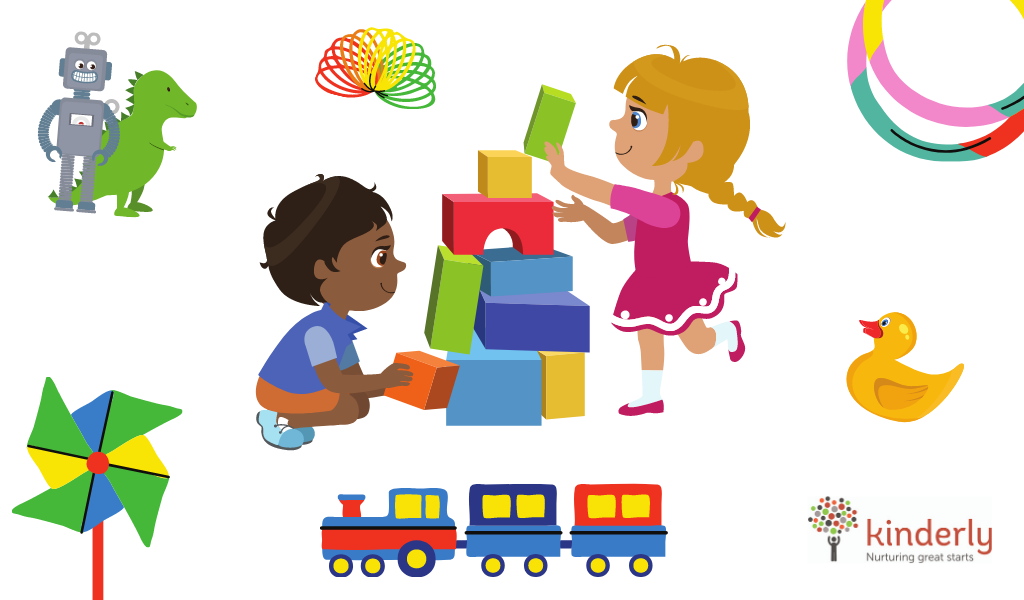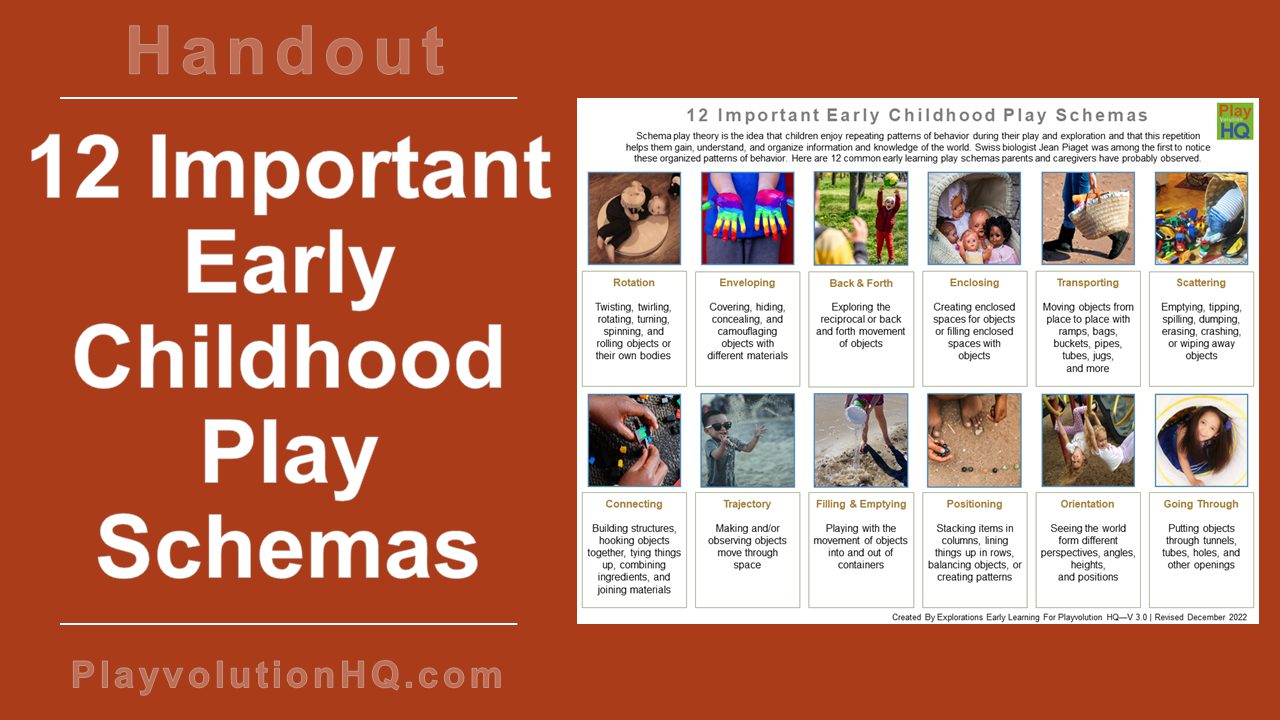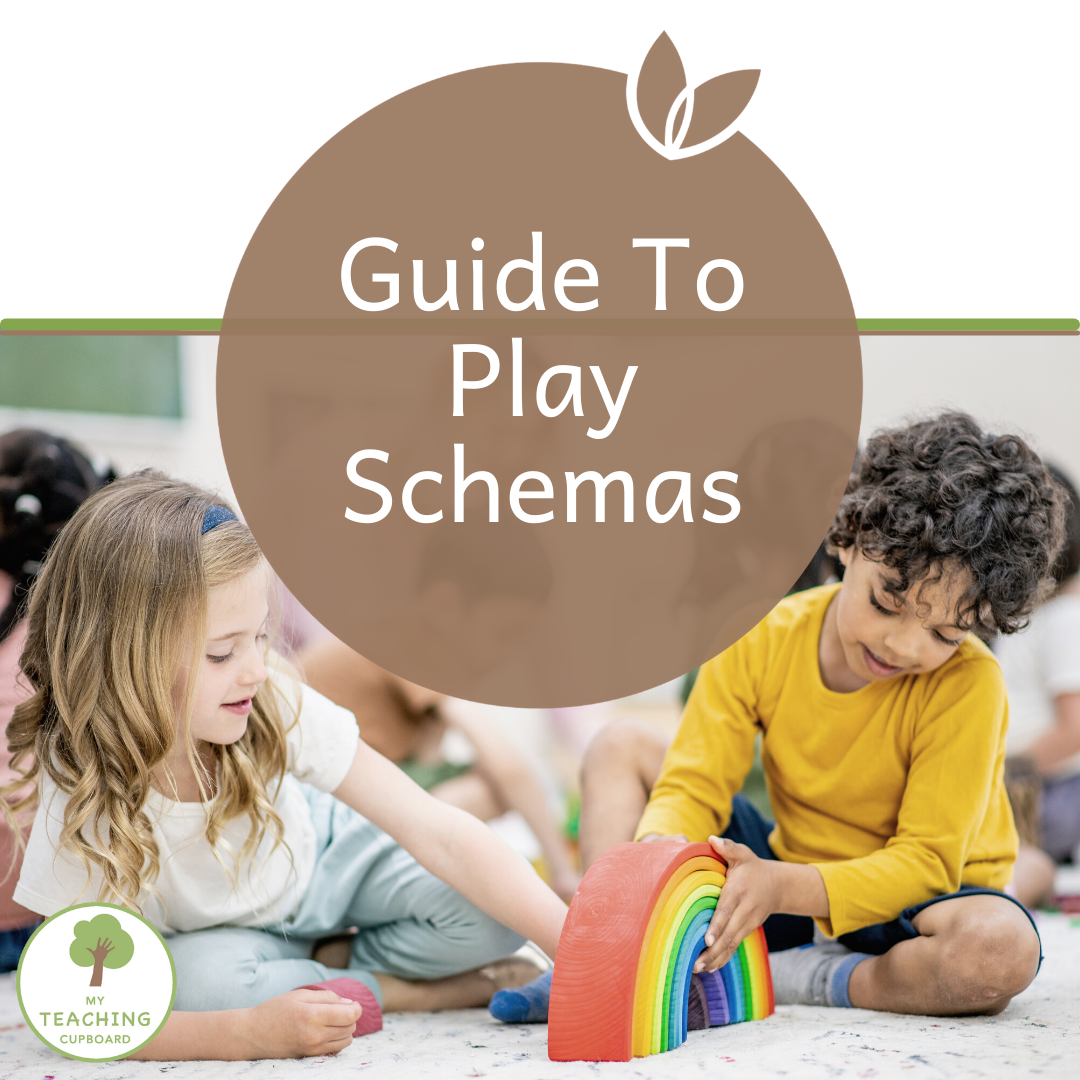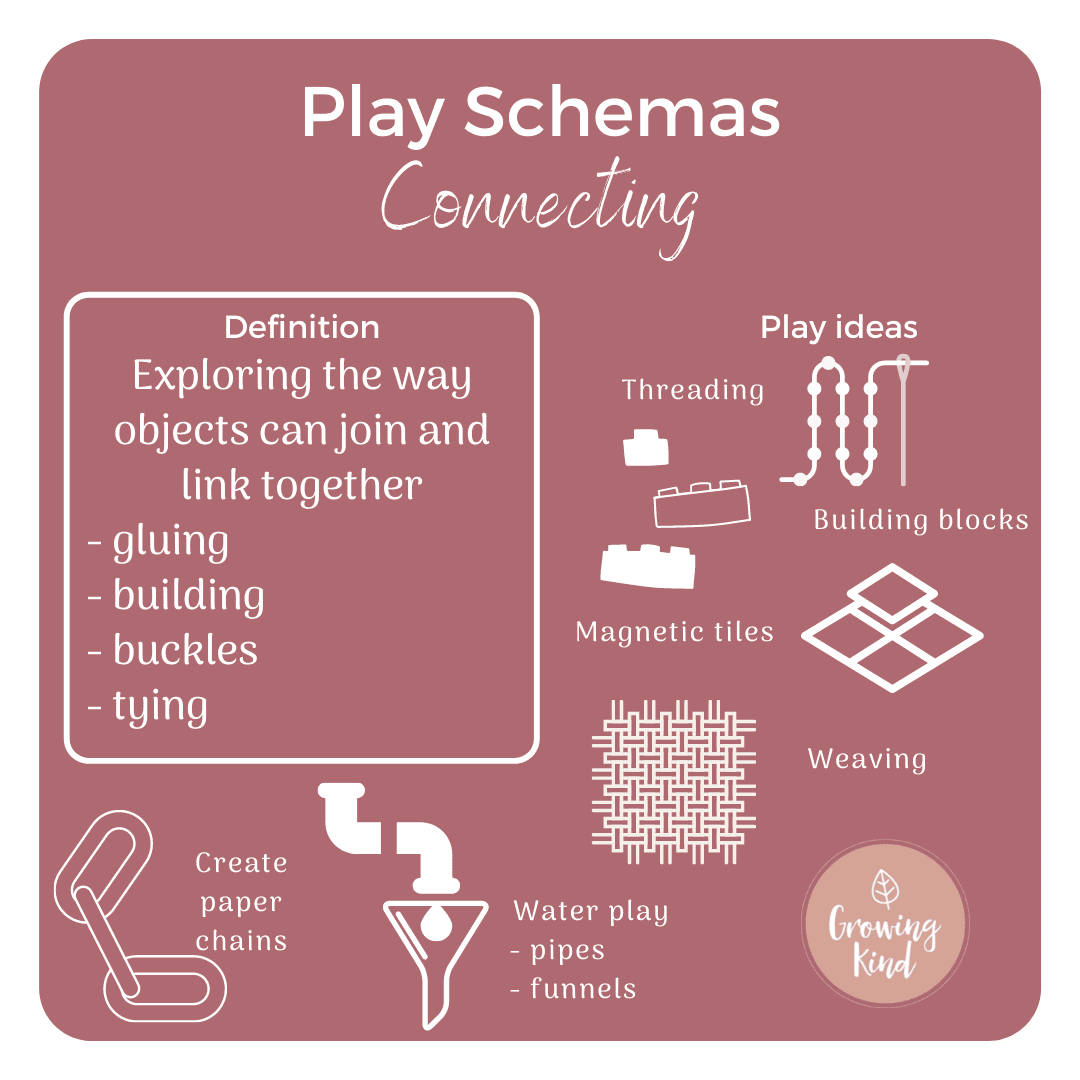
Handout Ten Common Early Childhood Schemas Playvolution HQ
Evolved through conversations with key early childhood education experts, Schemas in the Early Years focuses on the value of 'repeated patterns' of action or 'schemas' in young children's play.It stimulates readers to ask questions of themselves, to watch children closely, and to create a dialogue with parents and other educators as well.

Resources & Activities to support Play Schemas Blog
A schema is a pattern of behavior displayed during play and exploration that a child enjoys repeating. These patterns help children organize knowledge, express developing ideas, and make sense of the world. More About Common Early Childhood Play Schemas Interested in learning more about play schemas? Check these links: Schema Play Theory

The importance of schemas in early years Kinderly
Schemas in Early Childhood Schemas are patterns in behaviour, or urges that children have to repeat certain things like climbing, hiding and throwing. They are the building blocks of the brain - forging connections that enhance learning and growth. Understanding the concept of schemas is crucial when it comes to children's development!

A Guide to Play Schemas in Early Childhood Education — My Teaching Cupboard
Find out how play schemas will help you create an engaging and effective learning environment and confidently plan learning experiences that perfectly match the cognitive development of each child in your class.

All About Schemas Sheets MindingKids
Schemas are the urges that children have to do things - often repetitively. They emerge through play, and the repetitive nature of the behaviours help the brain to form connections and master skills. Schema theory can be identified as the journey from perception to integrating experience and thinking. (Martin, 2008)

Resources & Activities to support Play Schemas Blog
PowerPoint Presentation Ten Common Early Childhood Schemas Here are 10 common early learning schemas parents and caregiver have probably observed. A schema is a pattern of behavior displayed during play and exploration that a child enjoys repeating.

12 Important Early Childhood Play Schemas Playvolution HQ
What are Schemas in Children's Play? Have you noticed that your children repeat the same actions over and over again when they are playing? Why do they do this and what are they learning from these repeated actions? Let's take a look at schemas and discuss some answers. Tweet What is a Schema?

A Guide to Play Schemas in Early Childhood Education — My Teaching Cupboard
Understanding play schemas or being skilled to pinpoint the ones your students are developing is critical to the success of your earlier childhood saal.

Learning Through Play How to Recognise Schemas Early childhood learning, Family day care
So the early development of schemas through children's physical movement provides an essential underpinning for eventually beginning to write. Based on ideas by Professor Cathy Nutbrown, Head of.
Schemas in Action at Early Years Project Staff Training Week 6th 10th June 2011!
Watch on What types of schema are there? There are many different type schema and here are some of the most common: Trajectory - creating lines in space by climbing up and jumping down. Dropping items from up high. Positioning - lining items up and putting them in groups. Enveloping - covering themselves or objects completely.

Schemas fascinating, a real eye opener to understanding your child's patterns of behaviour
Understanding Schemas and Emotion in Early Childhood makes explicit connections between young childrens spontaneous repeated actions and their representations of their emotional worlds. Drawing on the literature on schemas, attachment theory and family contexts, the author takes schema theory into the territory of the emotions, making it relevant to the social and emotional development strand.

The Orientation Schema — My Teaching Cupboard
What are schema and why should you care? There are patterns of repeatable behavior known as "schema" that you can notice in your child's play during early childhood (~18months-age 5 or 6). No matter where you are in the world, these same schema are exhibited by kids.

What are play schemas and how do they help your toddler learn? Lovevery
by The Empowered Educator Leave a Comment As an early childhood educator, have you ever noticed a child endlessly filling containers or obsessively lining up objects? These behaviours likely reflect "schemas" - patterns of repeated actions that reveal how a child engages with the world.

Resources & Activities to support Play Schemas Blog
Schematic play happens when babies, toddlers and young children are involved in repeated actions or certain behaviours as they explore the world around them and try to find out how things work. We call these specific actions or behaviours 'Schemas'. They can vary from child to child and some children may never display schematic play or behaviours.

Schematic Play in the Early Years Catalyst Psychology
Schemas and young children's learning. In the past two decades, there has been a developing international research interest in the learning of babies and toddlers, and strands of research have emerged and re-focussed attention both on the importance of the kinds of experiences which best nourish and support young children's learning (Brierley Citation 1994; David and Powell Citation 1999.

Beyond the Wall There is Schema Play! Early childhood education resources, Emergent
Child Development and Play Schemas. Children are naturally curious learners who can learn best through exploring materials and concepts at their own pace. Early childhood education all starts with understanding child development. The best thing parents can do for their little ones at home is to practice observing or following their child's lead.